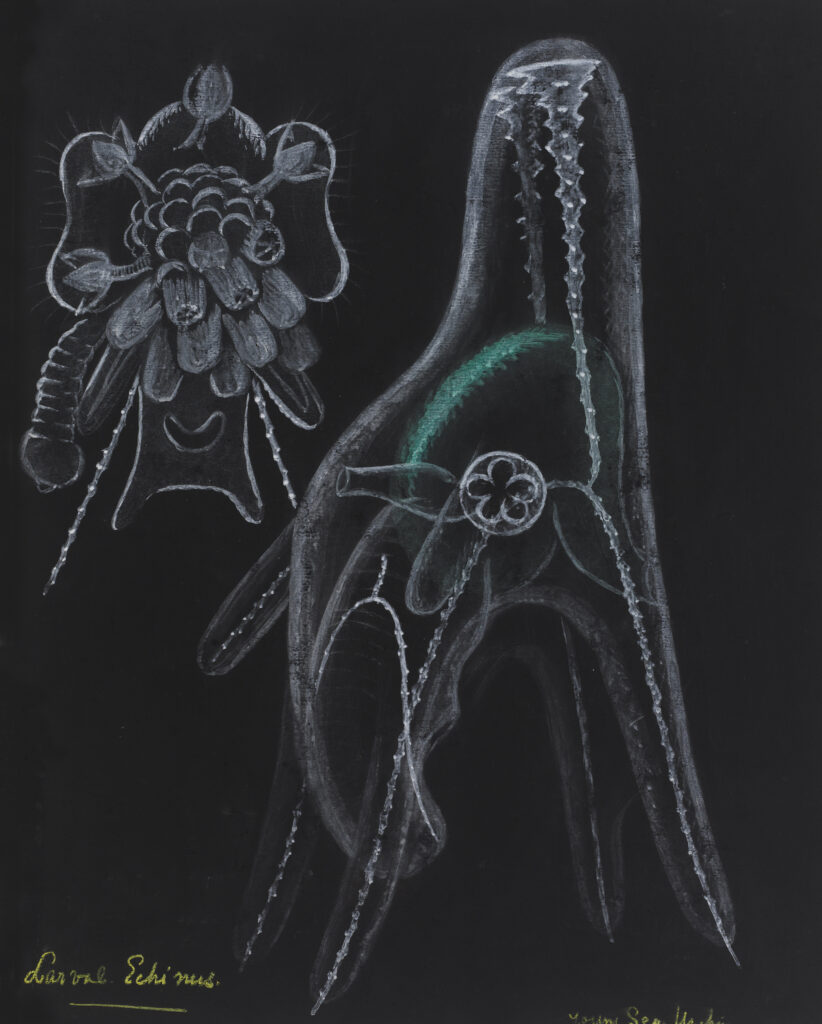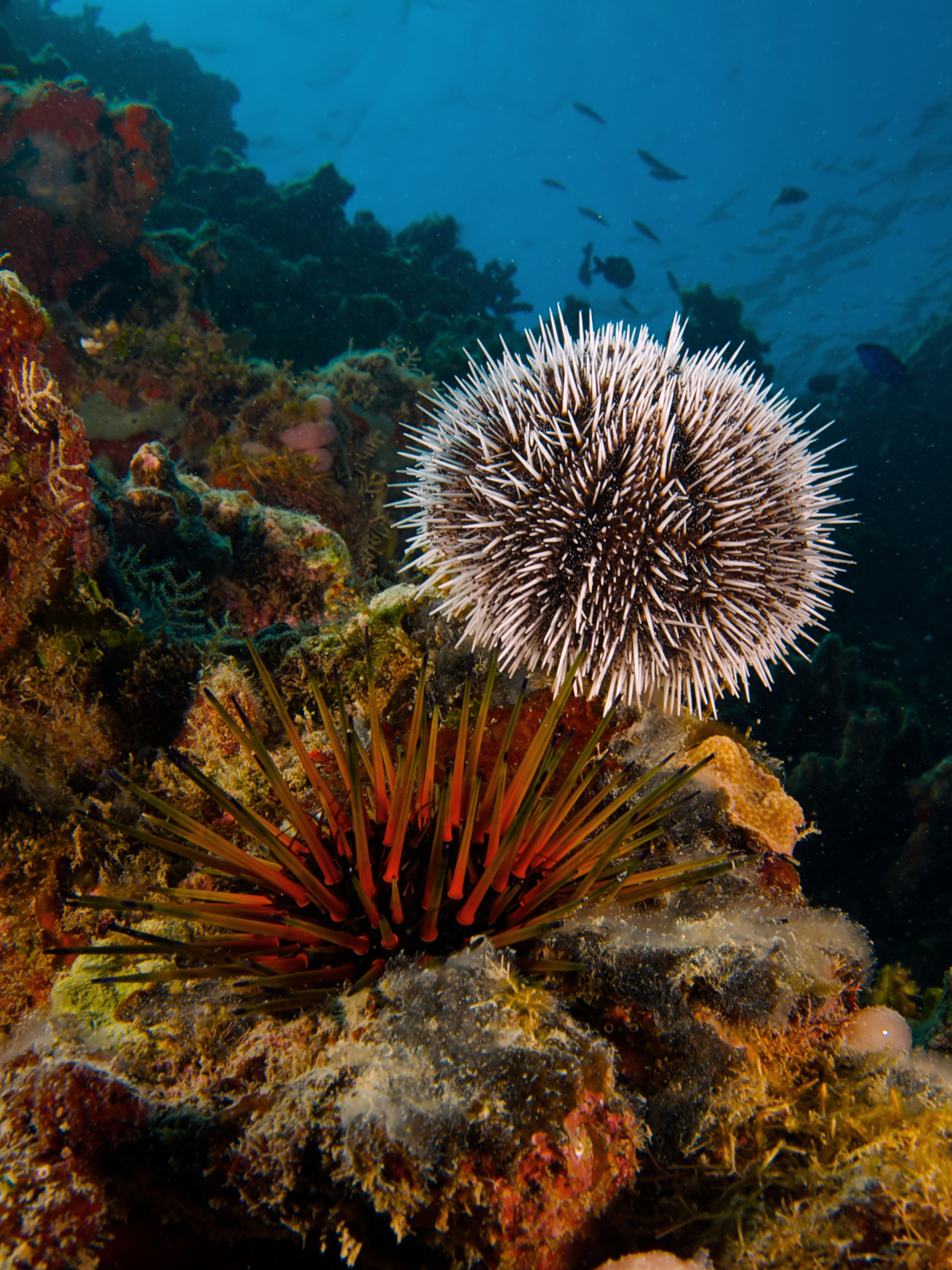Li, N., Griffith, A. W., & Manahan, D. T. (2023). Integrative biological analyses of responses to food deprivation reveal resilience mechanisms in sea urchin larvae. Molecular Ecology.
Many marine invertebrates have a two-stage lifestyle with a swimming “pelagic” larval stage. Larvae are much more mobile than the adults, traveling dozens or hundreds of miles, while adult animals remain more or less in the same place. Like the seeds of a plant, these mobile larvae allow the species to disperse to new areas. Anything that affects the larvae will have big impacts on future adult populations. With climate change, marine larvae are facing a future ocean with warmer temperatures and differences in food supply. How are marine larvae affected by differences in food supply, and what might this mean for adult populations?
Going to the buffet

In a recent study, scientists studied how sea urchin larvae respond to food deprivation. The researchers placed larvae into treatment groups with or without algae, the preferred food source of sea urchins. The experiment ran for three weeks. The researchers took a lot of measurements: molecular, physiological, chemical, and morphological. Remarkably, the unfed larvae survived the experiment: even after three weeks without food, they maintained their normal functions, including fat and protein content. They were a bit skinnier than the fed larvae, however! Unfed larvae could also recover quickly if they were given food later on, growing quickly upon re-feeding.
So, sea urchin larvae are resistant to starvation. How do they do this? Although larvae get some energy from mom, the scientists calculated that these “maternal reserves” would not be nearly enough to last for 3 weeks. The larvae must have been getting energy from somewhere else.
Mystery meals
Maybe the larvae could eat small bacteria that are present in seawater. However, the researchers used very careful experiments to reveal that this is not the case. They found that the larvae don’t seem to have the physical ability to capture bacteria. They must be eating something else!
If there are no larvae and they’re not eating bacteria, perhaps the larvae can take up molecules directly from the sweater. Supporting this, the unfed larvae produced a kind of protein called an “amino acid transporter.” Like the name implies, this protein can move molecules called amino acids (the building blocks of proteins) directly from seawater. Taking together a few other pieces of evidence, the researcher concluded that, indeed, these larvae feed on “dissolved organic matter” or DOM—basically just any of the organic goop found in seawater. DOM comes from other living things, such as decomposing algae or bacteria.
This way, even when regular food is unavailable, sea urchins can gain sufficient energy from molecules in the seawater itself. The sea is soup.
Seawater soup
This study highlights the remarkable resilience of

marine larvae to starvation, through their ability to use alternative sources of energy. This bodes well for sea urchins—they can tolerate poor food conditions, and might be pretty successful even if climate change alters the food supply. Using chemistry and a bit of math, the scientists calculated that DOM alone could be enough to fulfill all the nutritional needs of sea urchin larvae.
Another cool aspect of this work is that the expression of certain genes, such as the amino acid trasnporter transporter, was strongly associated with feeding status. Well-fed individuals had low expression and starved individuals had high expression (“expression” just refers to how many RNA molecules are produced from a particular gene). In the future, scientists can measure the expression of these genes to figure out whether an individual larva is well-fed or hungry, enabling monitoring of the nutritional status of wild populations.

I am a PhD student at MIT and the Woods Hole Oceanographic Institution, where I study the evolution and physiology of marine invertebrates. I usually work with zooplankton and sea anemones, and I am especially interested in circadian rhythms of these animals. Outside work, I love to play trumpet, listen to music, and watch hockey.

